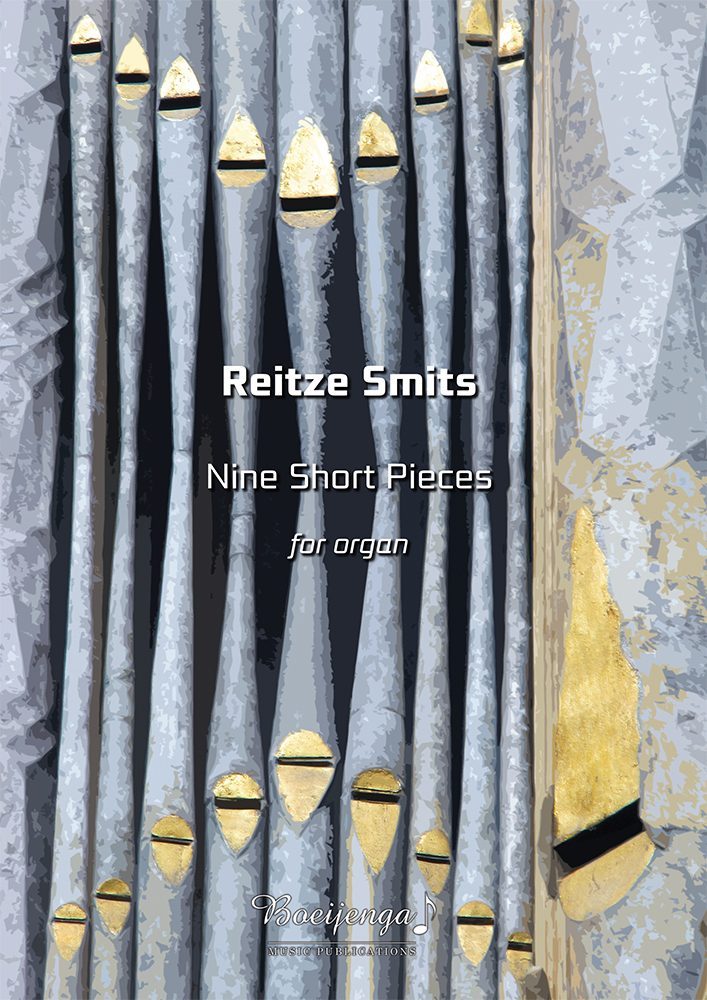Nine Short Pieces
Nine new compositions for organ, three times three pieces in different idioms, varying in duration from two to four minutes.
– Triptych, in a fairly traditional idiom with diatonic alterations and sometimes jazzy chords. A mild Preludium and a Postludium in a continuous movement, interrupted by Fugati, a polyphonic movement with a constantly sustained sequential figure, a ‘silly walk’ (thanks to John Cleese) in shifting rhythmic patterns.
– Toys, named after an Old English example, on which the first work offers a simple series of manualiter variations: Easy Toy.Followed by Noisy Toy: indeed a noisy piece, modernist in approach, but with transparent repetitive passages and sometimes even somewhat banal melodies. In conclusion Gentle Toy, a calm piece, in which repeated triplet figures gradually develop in floating rhythmic shifts. The idiom in these pieces is determined by having the black and white keys played separatedly by the left and right hand. This makes reading the accidentals easy and produces surprising harmonies.
– On old examples: pieces based on the earliest organ music, in an adapted modal idiom, partly even playable in meantone tuning. Organum shows the picture of early polyphony: long low notes, a melodic middle voice with Gregorian motifs, and a freely moving upper voice. Estampie is of course based on the well-known example from the Robertsbridge Codex. A form with separate elements that can be played in different orders, allowing the player to determine the length and choose different registrations. Upon ReLaDo, after the anonymous but almost modern sounding Upon LaMiRe. The motif as ostinato bass in the pedal, a flowing melody with rhythmic variations. Easy to play, to enjoy as a somewhat melancholic retrospective.
See the sheet music examples at: https://www.boeijengamusic.com/nl/nine-short-pieces-for-organ-smits-reitze-1956.html
See the sheet music examples at: https://www.boeijengamusic.com/nl/nine-short-pieces-for-organ-smits-reitze-1956.html
